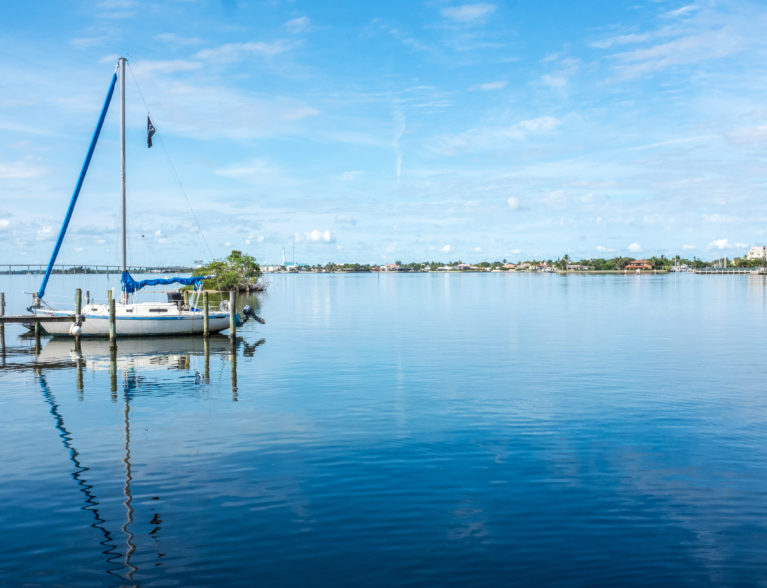
Even though the Florida Fish and Wildlife Conservation Commission has stopped spraying herbicides containing the controversial chemical glyphosate on its managed waters while it evaluates health risks, neither the city of Vero Beach, Indian River County, nor the Indian River Farms Water Control District has any plans to curtail use of weed killers.
All three local government bodies acknowledge using herbicides containing glyphosate for landscaping or weed control in drainage ditches or canals – despite findings of the World Health Organization, the state of California, and researchers at the University of Washington that glyphosate, the main ingredient of the popular weed killer Round Up, increases the cancer risk of people exposed to it.
The U.S. Environmental Protection Agency found in 2017 that glyphosate is not likely to be carcinogenic in humans, but a panel of scientists that advises the agency criticized the study behind that finding.
City, county and water control district officials all say the products they use in or near water are approved by the EPA and the Florida Department of Agriculture, are applied carefully and sparingly, and only used when mechanical methods of weed control are not feasible.
The Indian River Farms Water Control District is the agency primarily responsible for drainage and stormwater control for about 54,000 acres in southeastern Indian River County, maintaining 227 canals, dikes and ditches. David Gunter, superintendent since 2002, says he relies mainly on mechanical excavators to keep canals from flooding. But in areas that machines can’t handle, the district hires a licensed contractor to spray herbicides from trucks.
Gunter says the contractor, Future Horizons, Inc., is directed to spray only target species such as Brazilian pepper and hydrilla, using “the most environmentally-friendly chemicals that we can use.” And he said submerged vegetation is never sprayed during the rainy season from late spring to late fall.
“It’s not like we’re dumping herbicides and it’s floating into the [Indian River] Lagoon,” Gunter said.
He added that glyphosate is used only a few times a year to control species like alligator weed and torpedo grass and claimed that it is buffered so that it doesn’t persist in the environment.
“Glyphosate is not coming out of my system,” he said. “The components are not active as an herbicide anymore because of the ph of the water.”
As for Indian River County, utilities director Vincent Burke wrote in an email to Vero Beach 32963 that “limited amounts” of herbicides containing glyphosate are used for weed control in and around facilities such as tanks, valve pads, parking areas, buildings and landscaping. Burke said work crews wear protective equipment, follow manufacturer guidelines, and refrain from spraying in rainy conditions.
At county-owned and operated Sandridge Golf Club, Director of Golf Bela Nagy told 32963 in an email that some products containing glyphosate are used “in limited applications as needed,” but that vegetative buffers around ponds and lakes act as natural filters for any runoff from the golf course.
In Vero Beach, where city crews maintain some 12 miles of mostly dry drainage ditches, public works director Monte Falls said the primary method of weed control is the use of weed-eaters four times a year. Falls said an herbicide called AquaNeat, which contains glyphosate, is sometimes used on swales and ditches when mechanical equipment can’t keep up with vegetation growth.
“We do not do herbicide treatment in any standing water,” he said.
Besides being a suspected cancer hazard, some environmental scientists blame glyphosate runoff from excessive commercial and residential applications of Round Up for the drastic reduction in sea grass cover in the Indian River Lagoon over the past eight years.
A study published in JAMA in 2017 found a rapid increase in glyphosate in humans.
According to a Time.com article about the study, “Researchers led by Paul Mills, professor of family medicine and public health at the University of California San Diego, found that the percentage of people who tested positive for glyphosate, which is the active ingredient in the herbicide Roundup, shot up by 500 percent . . . [between 1993 and 2016]. The levels of glyphosate found in people also spiked by 1,208 percent during that time.”



